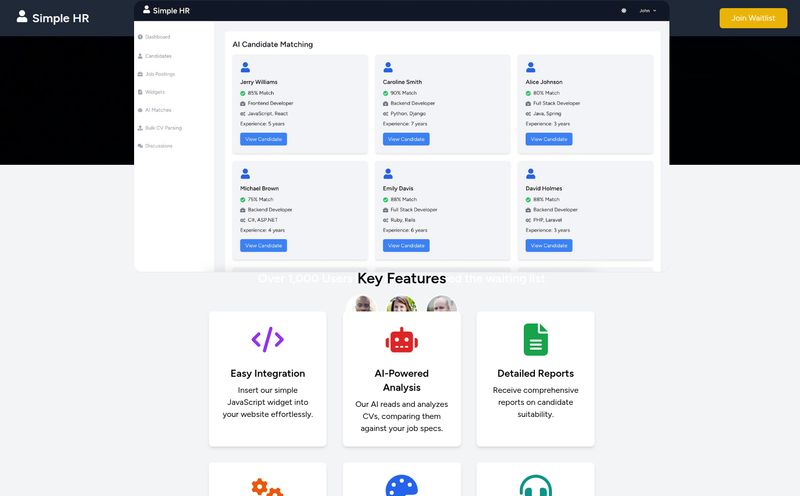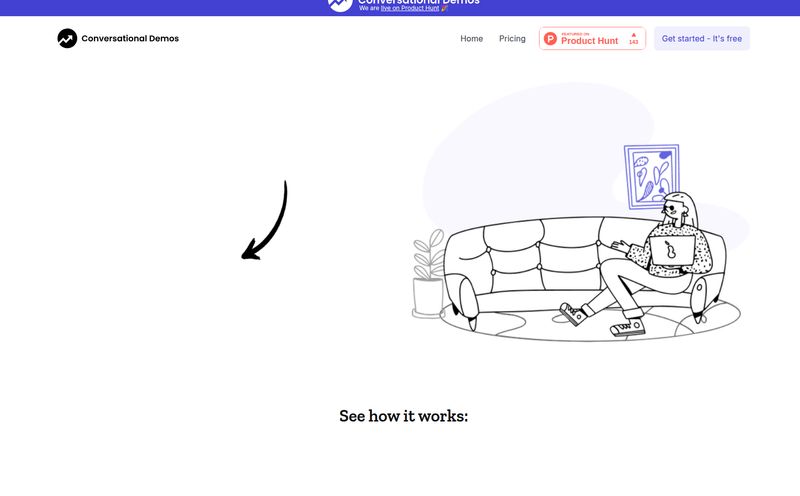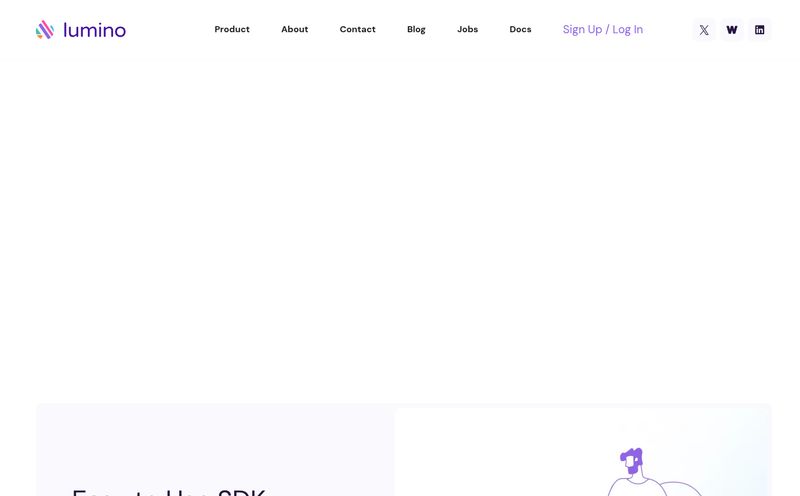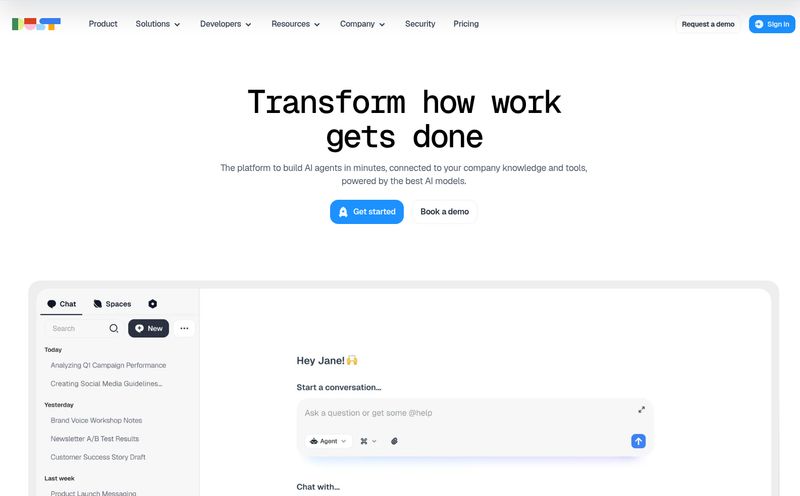We all say we’re “customer-centric.” We plaster it on our websites, we say it in meetings. But what does it actually mean? For most of us, it means drowning in a sea of unstructured feedback. You've got angry tirades on Twitter, brilliant feature ideas buried in a Discord channel, casual complaints in a Slack community, and a dozen other platforms all screaming for attention. It's chaos.
Trying to manually piece all that chatter together is like trying to assemble a jigsaw puzzle in the dark. You know there's a picture there, but you can't find the corner pieces. I’ve been in the marketing and SEO game for years, and I’ve seen teams spend insane amounts of time trying to quantify qualitative data. It usually ends with a frazzled community manager, a half-baked spreadsheet, and a lot of missed opportunities.
So when I stumbled upon a tool called Sushidata, my professional curiosity was definitely piqued. It claims to use AI to make sense of this exact mess. An intelligent analytics platform that acts as a translator for all that customer conversation? Okay, you have my attention.
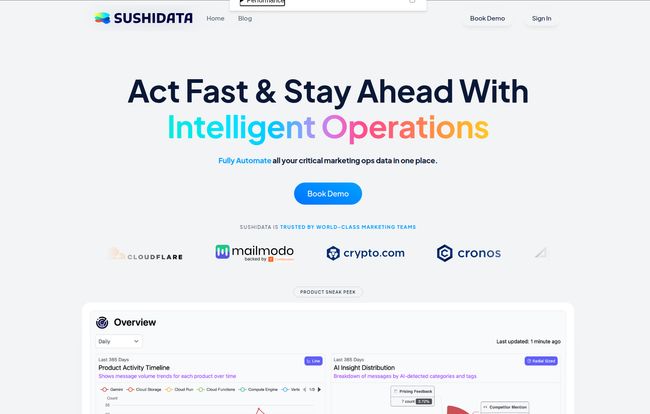
Visit ChainFuse
So, What Exactly is Sushidata?
At its core, Sushidata is a Voice-of-the-Customer (VoC) platform. But that’s a bit of a stuffy corporate term, isn't it? I prefer to think of it as a central listening post for your digital community. It connects to all the places where your customers are actually talking—not the sterile feedback forms they never fill out, but the messy, honest, and incredibly valuable public channels like Discord, Twitter, Slack, and more.
Instead of you or your team having to manually read through thousands of messages, Sushidata ingests all this unstructured data and uses its AI brain to analyze it. It’s designed to spot trends, identify recurring problems, and flag sentiment before a small issue becomes a full-blown PR crisis. The goal is to turn that firehose of feedback into actionable insights for your marketing, product, and customer success teams.
The Never-Ending Problem of Data Silos
Every company I've worked with has this problem. The product team lives in Jira. The support team is in Zendesk. The community team is juggling Discord and Twitter. Marketing is trying to get a pulse on all of it for their next campaign. Each team has its own little data kingdom, and nobody has the complete map.
This is where the real danger lies. The landing page for Sushidata puts it bluntly: “Your failures are your competitor’s opportunities.” And they're not wrong. That one angry user you missed on Discord could be the first sign of a major bug that a competitor will happily point out. That brilliant idea for a new feature buried in a Twitter thread could be the very thing your rival builds next month. When your data is siloed, you’re flying blind.
How Sushidata Aims to Unify the Kingdom
Sushidata's approach is pretty straightforward, which I appreciate. No overly complex jargon, just a clear process.
Step 1: Connecting Your Tech Stack
First, you plug it in. It integrates with your existing tech stack, pulling data from those disparate sources into one central hub. They claim it takes “minutes to set up,” which is a bold claim in the SaaS world. But for a marketing manager who doesn't have an entire dev team at their beck and call, ease of setup is a massive selling point.
Step 2: The AI Analysis Engine
This is where the magic is supposed to happen. Once the data is flowing in, the AI gets to work. It’s not just looking for keywords. It’s performing what they call 5-Dimensional Sentiment analysis. This goes beyond just “positive” or “negative.” It tries to understand the nuance—is the user frustrated, confused, excited? It also excels at detecting recurring issues and topics. So if ten different people complain about the same confusing UI element in ten different ways, the AI should be smart enough to group those complaints into a single, high-priority issue.
Step 3: Actionable Alerts and Reporting
Insights are useless if they just sit in a dashboard. Sushidata routes the important stuff directly to the people who need to see it. You can set up alerts for your marketing team in their Slack channel when brand sentiment takes a nosedive, or send a report of the top 5 feature requests to the product team’s inbox every Monday morning. It even boasts AI-generated reports, which could be a huge time-saver.
This closes the loop. It’s not just data analysis; it’s about making that analysis an active part of your team's workflow.
A Look at the Potential ROI
Okay, so it sounds cool, but does it actually help the bottom line? Based on its feature set, here’s where I see the real impact.
- Reducing Customer Churn: By catching negative sentiment and recurring issues in real-time, you can be proactive. Solving a customer's problem before they get frustrated enough to cancel their subscription is one of the most direct ways to protect your revenue.
- Informing Product Roadmaps: Stop guessing what users want. Sushidata essentially organizes your unstructured feedback into a prioritized list of feature requests and pain points. This is gold for product managers.
- Smarter Marketing Campaigns: Imagine knowing the exact language your happiest customers use to describe your product. Or understanding the primary frustrations of your competitor's users. This is powerful intel for crafting copy and campaigns that resonate.
The testimonial from Cloudflare's Senior Community Manager, Ben El-Baz, lends a lot of credibility here. When a company at that scale sees value in finding “deep insight and trends in unstructured feedback,” you know it's a real problem that needs solving.
What About the Cost?
Here’s the part everyone wants to know. As of writing this, Sushidata doesn't list its pricing publicly on the site. This isn't uncommon for B2B SaaS platforms, especially those targeting mid-market or enterprise clients. It usually means pricing is customized based on data volume, number of users, or specific integrations.
They push you towards a “Book a Demo” or “Start Free Trial” call-to-action. My advice? Always do the free trial. Get your hands dirty, connect a source or two, and see if the insights it generates are genuinely valuable for your business before you ever talk to a salesperson.
The Good, The Not-So-Bad, and The AI
No tool is perfect. As a professional, I think it's important to look at both sides of the coin.
On one hand, the ability to unify data from places like Discord and Twitter is a game-changer. The real-time feedback monitoring and AI-powered trend detection are exactly what modern, fast-moving companies need. It’s a huge step up from manual analysis.
On the other hand, you have to consider the potential drawbacks. First, you're reliant on AI. While powerful, AI can have biases or misinterpret nuance. Human oversight is still going to be necessary. Don't just blindly trust every report the machine spits out. Second, while they say setup is easy, connecting multiple data sources and configuring alerts might require some technical comfort. It might be “minutes” for a tech-savvy marketing ops person, but maybe a bit more involved for a traditional brand manager.
Final Thoughts: Is Sushidata the Future of Customer Listening?
I’m cautiously optimistic. Tools like Sushidata represent a necessary evolution in how we approach customer intelligence. The days of relying solely on surveys and NPS scores are numbered. The real, unvarnished truth is in the daily conversations your customers are having.
If you're part of a team that feels like you're constantly playing catch-up, trying to make sense of a chaotic mess of feedback, then a platform like this is absolutely worth investigating. It promises to turn that noise into a clear signal, helping you act faster and stay ahead. And in today's market, speed and awareness aren't just advantages—they're survival skills.
Frequently Asked Questions about Sushidata
- 1. What kind of data can Sushidata analyze?
- Sushidata specializes in analyzing unstructured conversational data. Think public messages from community platforms like Discord, social media like Twitter, Slack channels, and potentially other sources where customers talk openly.
- 2. Is it difficult to set up?
- The company claims it only takes minutes to set up. This likely means connecting your accounts (like Twitter or Discord) is a simple, authentication-based process. However, fine-tuning alerts and reports might require a little more configuration, so some technical familiarity is probably helpful.
- 3. How does the AI sentiment analysis work?
- It uses what they describe as “5-Dimensional Sentiment analysis.” This suggests a model that goes beyond a simple positive/negative/neutral score to understand more complex emotions like frustration, urgency, confusion, or excitement within the text.
- 4. Can I train the AI model on my own data?
- The FAQ on their site mentions the ability to train an AI model, which is a powerful feature. This would allow the system to learn the specific jargon, slang, and context of your community, leading to more accurate insights over time.
- 5. Is Sushidata only for Web3 or crypto companies?
- While some of the logos and language (like DAO) might suggest a focus on Web3, the platform's functionality is industry-agnostic. Any company with an active online community on platforms like Slack, Discord, or Twitter could potentially benefit from it.
- 6. Does Sushidata have a free trial?
- Yes, their website offers a free trial. This is the best way to evaluate the platform with your own data before committing to a paid plan.
References and Sources
- Sushidata Official Website
- Cloudflare (Mentioned in testimonial)
